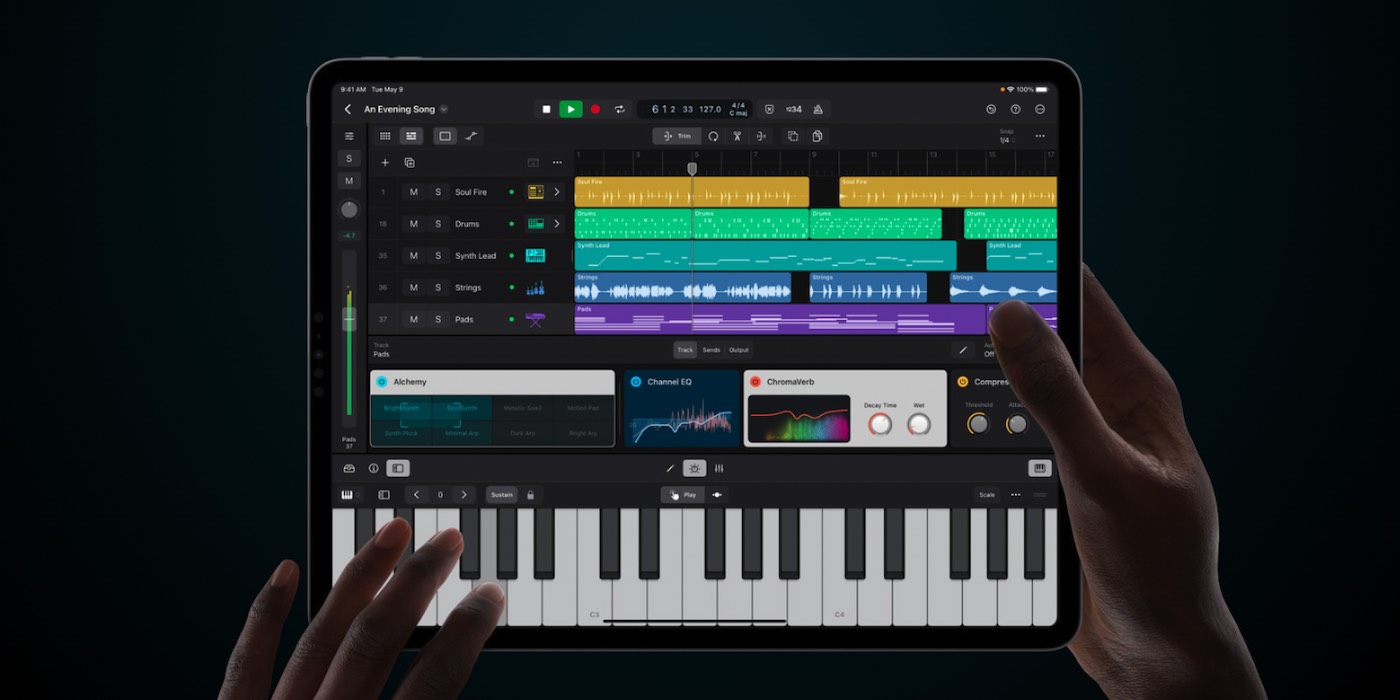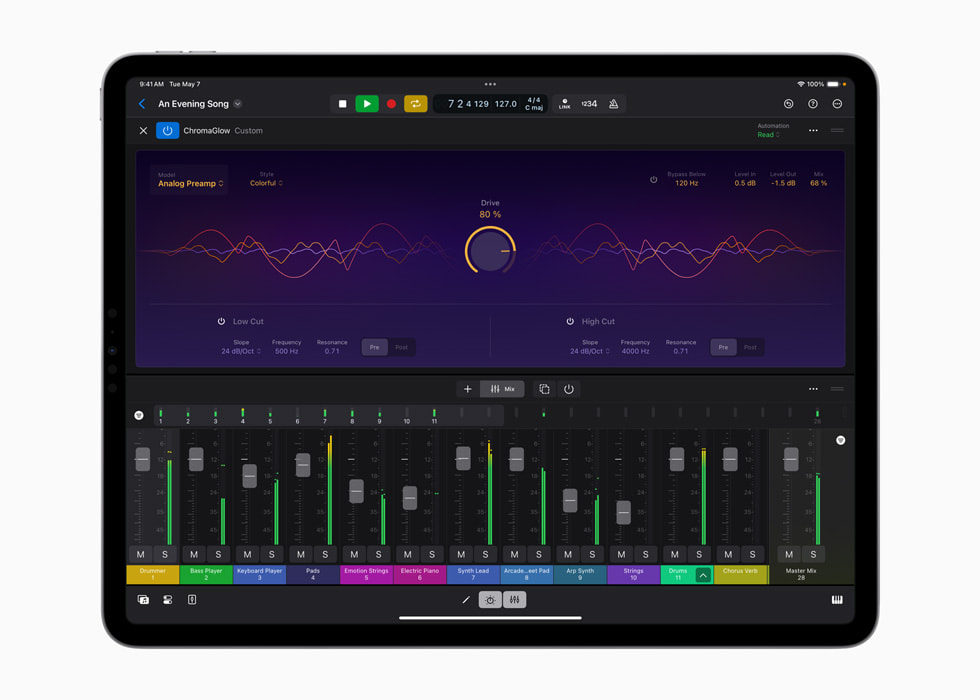
Today at Apple’s Let Loose event, we got our first look at its new M4 chip and the new iPad Pros it powers, the next-generation iPad Air, and the new Apple Pencil Pro, but it wasn’t all hardware. Apple also briefly touched on the latest editions of Final Cut and the new version of Logic Pro for iPad and Mac. Apple’s beloved flagship DAW has been banging out the beats for years now, with a major overhaul of the app back in 2021 and relatively steady stream of new features (by Apple’s standards anyway) since then. But today marks the unveil of Logic Pro for iPad 2 and Logic Pro for Mac 11. Let’s dive into some of the details on the new AI tech, intelligent Stem Splitter, and more.
More AI-powered virtual musicians you don’t have to buy beer for
Apple introduced Logic’s Drummer as one of the “world’s first” proper generative and artificially intelligent digital musicians over a decade now. Okay, that’s a bit of stretch but it can really kick a beat or two, and it is quite customizable and smart. With the new Logic Pro for iPad 2, it is bringing much of this tech (and hopefully some enhanced chops) over to its new virtual Bass Player and Keyboard Player.
They will presumably deliver much of the same customizable options and versatility as Drummer does these days, and seem to be an exciting new addition to Logic Pro’s push towards leveraging AI-like features while maintaining artistic integrity and personal artistic identity.
Session Players augment the live-playing experience while ensuring artists maintain full agency during any phase of their music-making process.
Bass Player
Apple says Bass Player is “trained” with “today’s best bass players using advanced AI and sampling technologies.” There will be eight different Bass Players to choose from (presumably organized by style/genre like Drummer is) with a host of variable parameters to alter the performance and groove. – “complexity and intensity, slides, mutes, dead notes, and pickup hits.”
Bass Player can jam along to your chord progressions or you can choose from 100 loops to draw from. Chord Track allows artists to “define and edit the chord progressions to a song” and you can leverage the Studio Bass plug-in to choose the instrument Bass Player is actually wielding – “six new, meticulously recorded instruments, from acoustic to electric — all inspired by the sounds of today’s most popular bass tones and genres.”

Keyboard Player
It sounds like much of that also carries over to Keyboard Player where users can choose from four different styles. The Apple AI jammer tickling the keys can play simple blocked chord hits and can understand chord voicing variations with alternate harmony extensions all while leveraging the same Chord Track options and the Studio Piano plug-in mentioned above.
Stem splitting recording recovery (stealing samples the easy way)
We have seen this tech pop up through various third-party products through the years and more recently within the MPC ecosystem, but Logic Pro now has its very own Stem Splitter. It allows users to split audio files into four distinct parts: drums, bass, vocals, and “other instruments” – M-series Apple silicon hardware is required.
Apple is pushing the feature as something of a recovery tool, to rescue the magic you stumbled into on a stereo Voice Memos recording, something you did on an old cassette tape, or even captured live. And that it can, theoretically, do, and knowing Apple, probably quite well. But I’m just going to use it to split the vocals and sounds from other people’s recordings for sampling like the rest of us. Kidding, not kidding.
Either way, this could be really cool and just another feature Apple is adding into Logic Pro for the same price of entry so we don’t have spend cash elsewhere on it.

Chroma analog glow up
ChromaGlow is still a touch mysterious to me. During today’s event presentation, it, at first, sounded like it was going to be some kind of direct update to ChromaVerb. And it does look like that is indeed what it is to some degree, but there appears to be more to it by way of delivering some additional analog saturation processing as well – perhaps something akin to what we would get from analog compressors and EQ units, or tape emulation plugs.
Here’s how Apple describes it:
Users can dial in the perfect tone with five different saturation styles to add ultrarealistic warmth, presence, and punch to any track. They can also choose from modern clean sounds, nostalgic vintage warmth, or more extreme styles that can be shaped and molded to taste.
Have I got this wrong? Is it just a new reverb plug with some sweet analog saturation options thrown in? Cool either way.
Logic Pro for iPad 2 (I will be calling this Logic Pro 2 for iPad from now on) also lands on May 13 as a free update – $4.99 (U.S.) per month or $49 (U.S.) a year.
The new Logic Pro for Mac 11 (here we go again with the names) is available on May 13 as a free update for all existing users, with the usual $199.99 price tag for those jumping in for the first time.
FTC: We use income earning auto affiliate links. More.




![[CITYPNG.COM]White Google Play PlayStore Logo – 1500×1500](https://startupnews.fyi/wp-content/uploads/2025/08/CITYPNG.COMWhite-Google-Play-PlayStore-Logo-1500x1500-1-630x630.png)